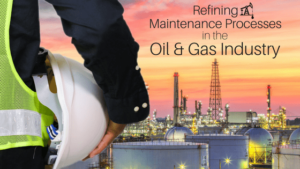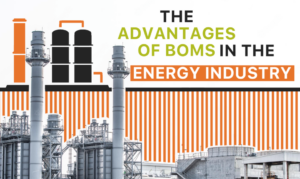In the oil and gas industry, maintenance is critical to ensure the safe and efficient operation of facilities and equipment. The adoption of EAM/CMMS systems has allowed companies to optimize their maintenance operations, but how do they know if they’re achieving the best results?
This is where benchmarking comes into play. Benchmarking maintenance operations against industry standards and peers can identify areas for improvement and help companies achieve better results. In this blog, we’ll explore best practices for benchmarking EAM/CMMS in the oil and gas industry, covering upstream, midstream, and downstream operations.

Upstream Operations
Upstream operations involve the exploration and extraction of oil and gas from underground reserves. These operations require specialized equipment and processes that are subject to a high degree of wear and tear. To benchmark maintenance operations in upstream operations, companies should focus on the following best practices:
Identify Key Performance Indicators (KPIs) – KPIs such as equipment uptime, maintenance costs, and mean time to repair (MTTR) should be tracked and compared against industry benchmarks.
Monitor Preventive Maintenance (PM) Compliance – PM compliance rates should be monitored to ensure that critical equipment is being properly maintained and that maintenance schedules are being followed.
Analyze Failure Data – Failure data should be collected and analyzed to identify recurring problems and to inform improvements in maintenance practices.
Midstream Operations
Midstream operations involve the transportation of oil and gas from the extraction site to refineries and other destinations. These operations rely on complex infrastructure such as pipelines, storage tanks, and pumping stations. To benchmark maintenance operations in midstream operations, companies should focus on the following best practices:
Measure Reliability – Reliability metrics such as equipment availability and mean time between failures (MTBF) should be tracked to ensure that critical infrastructure is operating as intended.
Monitor Maintenance Costs – Maintenance costs should be monitored and compared against industry benchmarks to identify opportunities for cost savings.
Analyze Maintenance Backlogs – Maintenance backlogs should be analyzed to identify bottlenecks in maintenance operations and to inform improvements in scheduling and resource allocation.
Downstream Operations
Downstream operations involve the refining and distribution of petroleum products to end-users. These operations require complex and specialized equipment such as distillation columns, catalytic converters, and storage tanks. To benchmark maintenance operations in downstream operations, companies should focus on the following best practices:
Monitor Equipment Performance – Equipment performance metrics such as throughput, yield, and energy efficiency should be tracked and compared against industry benchmarks to identify opportunities for improvement.
Analyze Maintenance Costs – Maintenance costs should be analyzed to identify areas for cost savings and to inform improvements in maintenance practices.
Implement Condition-Based Maintenance (CBM) – CBM practices such as vibration analysis and thermography can be used to identify equipment issues before they lead to failures, reducing downtime and maintenance costs.
How HubHead’s Benchmarking Services Help Oil and Gas Companies
Benchmarking EAM/CMMS in the oil and gas industry is essential to achieving optimal maintenance performance and identifying areas for improvement. By benchmarking upstream, midstream, and downstream operations against industry standards and peers, companies can optimize their maintenance activities for critical assets and processes.
As the industry becomes more competitive, benchmarking will be increasingly important to stay ahead of the curve and achieve the best results possible; HubHead’s benchmarking services can help you do so. Our team of experienced consultants provide comprehensive and ROI-based roadmaps to bridge gaps between your current EAM/CMMS and industry best practices. If you would like to learn more, download our brochure or book a meeting with one of our consultants – we would be glad to answer any of your questions.

Refining Maintenance Processes in the Oil & Gas Industry
The Advantages of BOMs in the Energy Industry
How to Recognize Red Flags in EAM/CMMS Data

Share this article



